by Lisa Cooke | Dec 14, 2019 | 01 What's New, Church |
Finding church marriage records may not be as easy as finding civil marriage records. I’ve invited genealogist Sunny Morton to share her best strategies for finding U.S. church marriage records from her new book How to Find Your Family History in U.S. Church Records: A Genealogist’s Guide.
Strategies for Finding U.S. Church Marriage Records
Marriage records are part of that genealogy trinity of U.S. vital records. In addition to documenting the wedding, marriage records may also serve up the equivalent of genealogical party favors, such as the birth dates, birthplaces and sometimes even parents’ names of the bride and groom.
Civil or government records are generally the first ones we turn to in the United States. These types of records are commonly referred to as “vital records,” since they document important events in a person’s life like birth, marriage, and death.
Civil marriage records can be fairly easy to find and access. However, that’s not always the case. There may be times you can’t obtain a civil marriage record. If you do find it, it may not include all the information you were hoping for. And sometimes you’d just like to find more corroborating evidence or additional clues about their lives. That’s when it’s a good idea to turn to church marriage records.
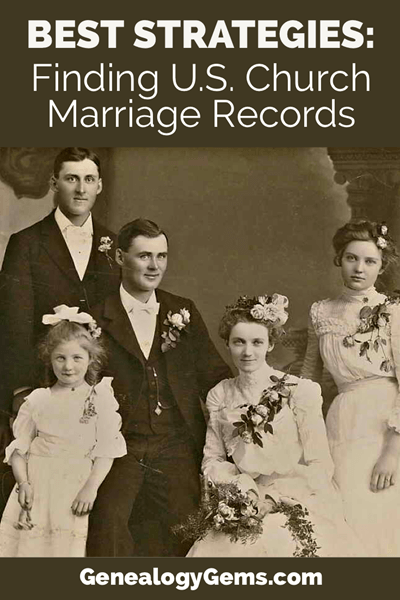
Though not all of our U.S. ancestors were married in a church or by a member of the clergy, many of them were, so church marriage records may exist.
In general, finding U.S. church records is a two-step process:
1. identify the right church
2. then find its records.
However, this may actually involve a few additional steps.
I’m going to share with you the steps and strategies of this process from my new book How to Find Your Family History in U.S. Church Records: A Genealogist’s Guide. Along the way we’ll see how they apply to a real genealogy case that resulted in success.
Step 1: Identify the Church of Your Ancestor
Identifying the church in which an ancestor married is key to locating any surviving record of it.
Let me give you the first and most important tip: the answer may be sitting under your nose.
What do I mean by that? Start by looking carefully back through other records you already have about the bride or groom. These types of records include obituaries, oral histories, county histories, tombstones, etc. Do they mention a church affiliation?
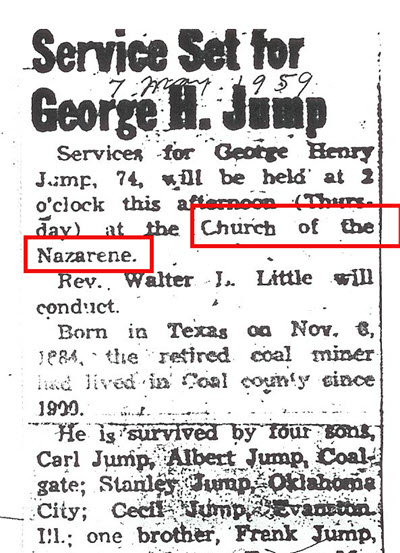
Example for Lisa’s family history
Even if they don’t mention a church, perhaps one of these records can give you a clue.
For example, let’s say the husband’s obituary mentions his lifelong religious affiliation, like Methodist or Catholic or Baptist, but not the name of the local congregation. My book offers several detailed strategies for tracking down the church name, but here’s one of the most helpful: Look at city directories, histories or maps from that time period to identify nearby churches of that denomination. Keep in mind that before the age of the automobile, people couldn’t travel far to attend church.
Let’s say you find both Irish and German Catholic parishes in the area. Based on what you already know about your family, with which did they likely affiliate?
If you’ve got the civil marriage record, look at the name of the officiator. Do you see a title hinting that this was a minister, such as “Rev” (short for Reverend)? (As an FYI, the initials “J.P.” stand for Justice of the Peace, a civil office.)
Occasionally you may even see the denomination written right in the record, as it is in the Colorado civil marriage record of Mike Fox and Mary Eiarrman:

Colorado civil marriage record of Mike Fox and Mary Eiarrman
Most marriage certificates don’t state a minister’s affiliation but searching with Google may be able to help you with that.
For example, the Indiana marriage certificate for another ancestral couple of mine identifies the officiator as “S.B. Falkenberg, Minister.” Googling that name, along with the keywords church and Indiana, led me to online books that identified him as a Methodist.
Additional digging revealed that “Somers B. Falkenburg”—probably the same guy—was specifically assigned to the Rushville Circuit of the Southeast Indiana Conference of the Methodist Episcopal Church in 1860. This was around the time and place I’m looking for that 1861 marriage record. (Learn to do this kind of digging yourself from my book. See Chapter 14 Methodist.)
Step 2: Find Where the Church Records are Located
Once you’ve identified the church, it’s time to search for congregational records that may document the marriage.
Your strategy may vary, depending on the denomination, the time and the place. Again, my book can help you: there’s a chapter with general strategies for finding church records and there are specific chapters on various denominations. Here are some get-started strategies.
Googling the Church
Find out whether the church still exists by googling the church name and location or using the online congregational locator tools I mention in the various denominational chapters.
If the church still exists, you’ll likely find a website, Facebook page, or other contact information. Reach out to their office and ask about their old records.
If you can’t find the church online, it may have closed, merged with another church, or been renamed.
Contact the Church Organization
You might turn to regional church offices or archives, such as those of a Catholic diocese or Methodist conference, to see whether they can tell you anything about that church or its records.
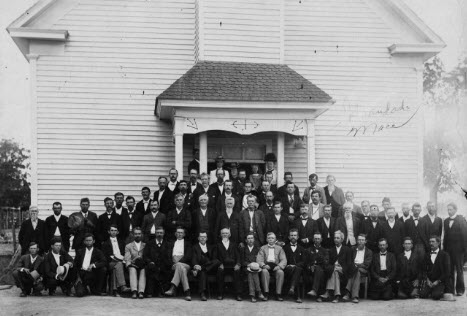
Each denomination has a different organizational structure. (See the 12 different denominational chapters in Part 2 of my book.)
An Example Search

Searching for church directories
Remember that 1889 civil marriage record for Mike Fox and Mary Eiarrman I showed you previously? Let’s take a look at the process I used to find their church marriage record.
Since the civil marriage record told me that the officiator Godfrey Raeber was a Catholic priest, I turned to the annual Catholic Directory for that year to see what parish (local congregation) he was assigned to.
I googled catholic directory 1889 and found that year’s edition online at HathiTrust Digital Archive.
Keyword-searching within the directory for Raeber didn’t bring up any results, but I didn’t stop there. I paged through it until I found the listing for the diocese of Denver (it is now an Archdiocese).
I found the priest listed at St. Ann’s, but his surname was spelled a little differently, which is why I couldn’t find him with that keyword search:

Immediately, I googled St. Ann’s Catholic Church in Denver, Colorado. Nothing came up. So, I googled Denver Catholic diocese archive and found the archdiocesan archivist’s contact information. I called him and asked what he could tell me about St. Ann’s parish and its records. The parish had closed, he said, and he had the records right there. What did I need?
Hooray! I mailed him a check and emailed him the specifics of my request. He sent me back a copy of Mike and Mary’s entry line in the marriage register:
In case you can’t read it easily, the entry references their marriage on the 28th (the month and year, in preceding columns, are “ditto-marked” the same as the entry above it, which I can’t see, but I have the date already from the civil marriage record). Then Mike Fox’s name appears, age 23, “1” for his first marriage, Denver residence, son of Martin & Francis, born in Germany.


Similar information appears for Mary, the bride, though her surname is mostly illegible. These details (age, parents’ names, birthplace) were what I hoped to learn when I originally ordered the civil marriage record—but it’s not there. Only by taking the extra steps to find the church marriage record did I uncover these additional details.
I’m still looking for a Methodist record of that marriage recorded by S.B. Falkenberg. I’m guessing his was a traveling assignment covering many small towns, which means his own personal log book may have been the only place he would have created a record, if indeed he did. The records of itinerant ministers are not easy to find.
The Search for Church Marriage Records Can Lead to More Gems
It’s true that you won’t always find church records of ancestors’ marriages or other life events such as births, baptisms, deaths or burials.
Sometimes the records weren’t created; for example, Baptists didn’t generally record marriages, as they weren’t considered a religious rite.
Or perhaps membership records have been destroyed or lost.
Occasionally, you’ll track down the records only to find they aren’t accessible to researchers. That’s sometimes true for Catholic sacramental records, which are confidential—though many church or archive offices will release copies or transcriptions of older records.
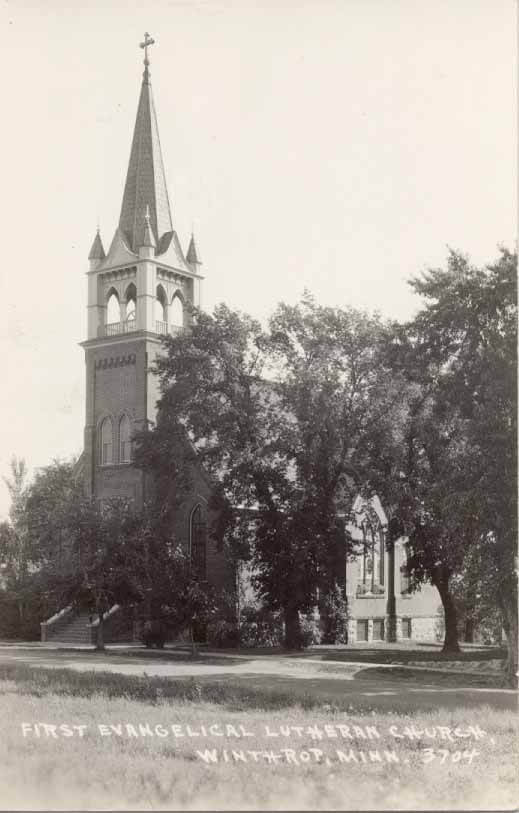
But while following the process for church records, you may discover other gems that can add color to your family history stories.
For example, when I was looking for Catholic parish records in Olyphant, Pennsylvania, I found a short history of the church. It described the devotion of its earliest members, who raised the funds to erect their building and even helped dig its foundations. Though I can’t prove it, I have reason to believe this family was part of that devoted group.
Other times, you may find photos, directories, reminiscences or other records that give you a glimpse of your ancestors’ church community life.
A Genealogist’s Guide to Finding Church Records
While the 2-step process for finding church marriage records is straight-forward, each case requires unique resources. In How to Find Your Family History in U.S. Church Records: A Genealogist’s Guide which I wrote with Harold Henderson, CG lays out a plethora of specific resources for the major Christian denominations in the U.S. before 1900:
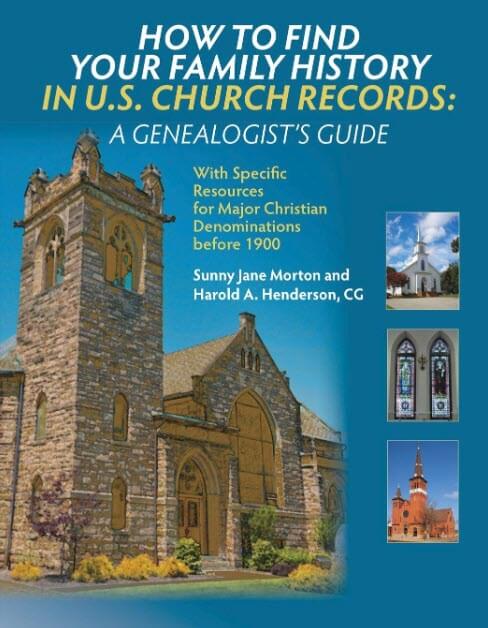 • Amish,
• Amish,
• Anglican,
• Baptist,
• Congregational,
• Dutch Reformed,
• Latter-day Saint,
• Lutheran,
• Mennonite,
• Methodist,
• Quaker,
• Presbyterian,
• Roman Catholic,
• and various German churches.
More than 30 archivists, historians, and genealogical experts in specific faith traditions have contributed their knowledge to the book.
Church records won’t always be your genealogical salvation, but every so often—hallelujah!—they will prove to be your saving grace.
About the Author
Sunny Morton (along with Harold A. Henderson, CG) is the author of the books How to Find Your Family History in U.S. Church Records: A Genealogist’s Guide, and My Life & Times: A Guided Journal for Collecting Your Stories. She is also a contributing editor to Family Tree Magazine.
(Disclosure: Genealogy Gems is a participant in the Amazon Services LLC Associates Program, an affiliate advertising program designed to provide a means for sites to earn advertising fees by advertising and linking to Amazon.com. Thank you for supporting articles like these by using our link.)
by Lisa Cooke | Apr 22, 2019 | 01 What's New, Beginner, Brick Wall, Research Skills
Have you reached a dead end on one branch of your family tree–you can’t find the parents’ names? Check out these sources for finding ancestors’ parents.
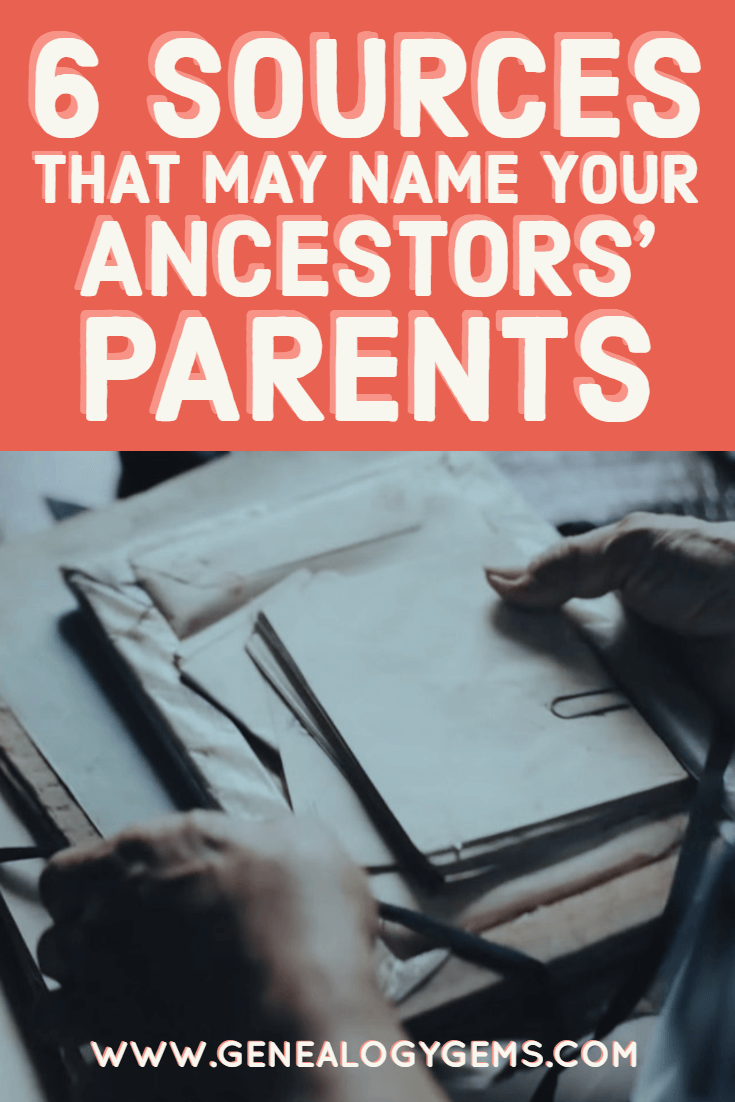
Recently Genealogy Gems podcast listener Trisha wrote in with this question about finding marriage license applications online. She hoped the original application would name the groom’s parents. Unfortunately, her search for the applications came up dry. So, she asked, “Are there other documents that would have his parents names listed on them?”
Here’s a brainstorm for Trisha and everyone else who is looking for an ancestor’s parents’ names (and aren’t we all!).
6 Record Sources that May Name Your Ancestors’ Parents
1. Civil birth records. I’ll list this first, because civil birth records may exist, depending on the time period and place. But in the U.S. they are sparse before the Civil War and unreliably available until the early 1900s. So before a point, birth records–which will almost always name at least one parent–are not a strong answer. Learn more about civil birth records in my free Family History Made Easy podcast episode #25.
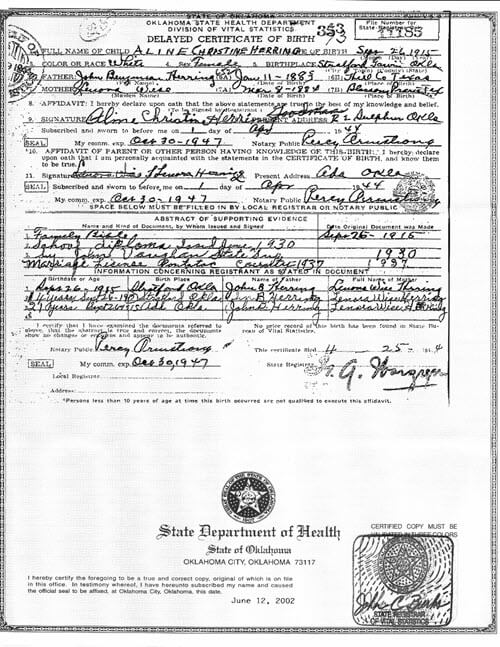
2. Marriage license applications. Trisha’s idea to look for a marriage license application was a good one. They often do mention parents’ names. But they don’t always exist: either a separate application form was never filled out, or it didn’t survive. Learn more about the different kinds of marriage documents that may exist in the Family History Made Easy podcast episode #24.
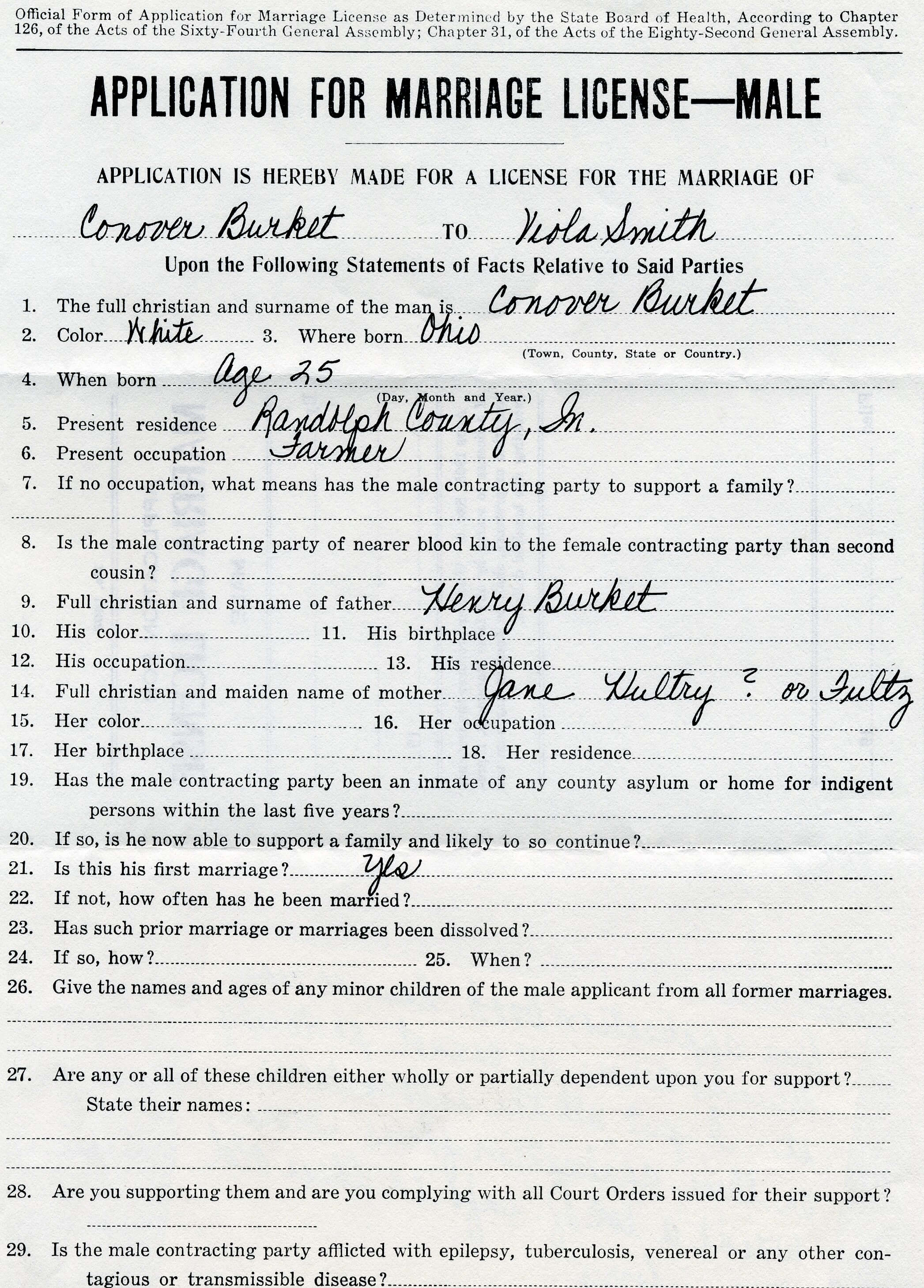
3. Obituaries. Obituaries or death notices are more frequently found for ancestors who died in the late 1800s or later. Thanks to digitized newspapers, it’s getting SO much easier to find ancestors’ obituaries in old newspapers. My book How to Find Your Family History in Newspapers is packed with practical tips and inspiring stories for discovering your family’s names in newsprint. Millions of newly-indexed obituaries are on FamilySearch (viewable at GenealogyBank). Get inspired with this list of 12 Things You Can Learn from Obituaries!
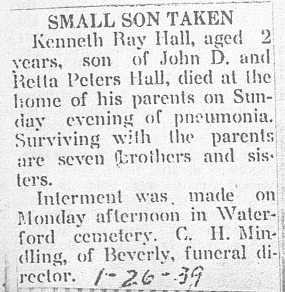
4. Social Security Applications (U.S.). In the U.S., millions of residents have applied for Social Security numbers and benefits since the 1930s. These applications request parents’ names. There are still some privacy restrictions on these, and the applications themselves are pricey to order (they start at $27). But recently a fabulous new database came online at Ancestry that includes millions of parents’ names not previously included in public databases. I blogged about it here. Learn more about Social Security applications (and see what one looked like) in the show notes for my free Family History Made Easy podcast episode #4.
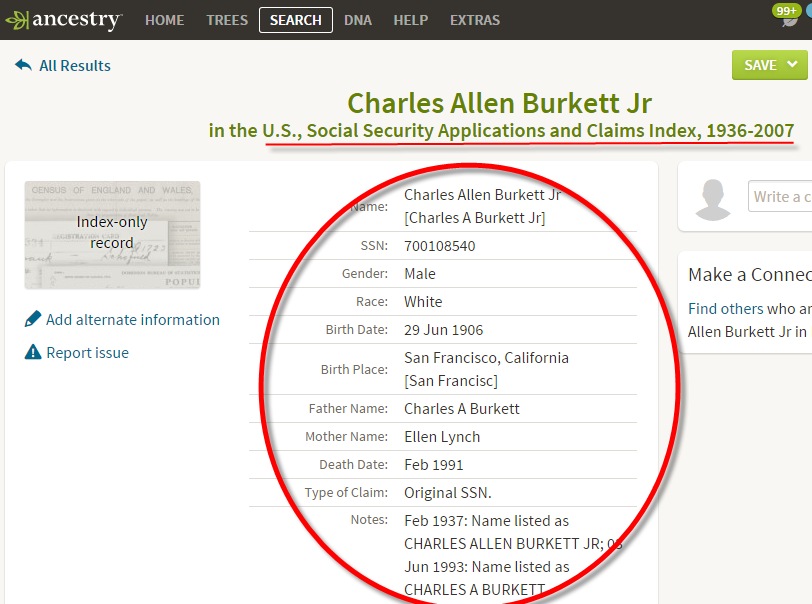
5. Baptismal records. Many churches recorded children’s births and/or the baptisms of infants and young children. These generally name one or both parents. Millions of church records have come online in recent years. Learn more about birth and baptism records created by churches in the Family History Made Easy Podcast Episode #26. Click these links to read more about baptismal records in Quebec and Ireland.
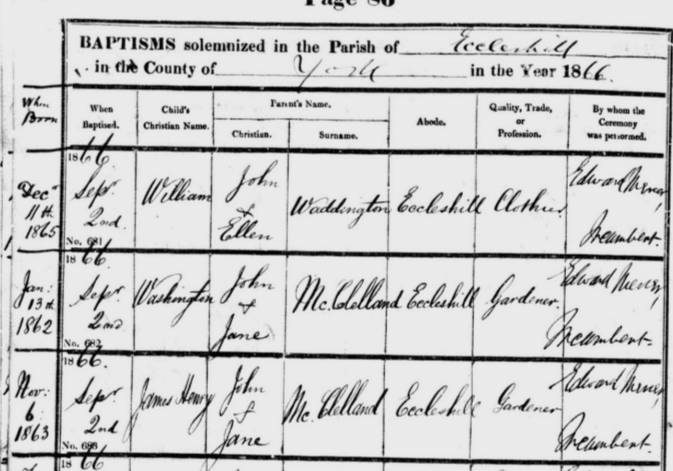
6. Siblings’ records. If you know the name of an ancestor’s sibling, look for that sibling’s records. I know of one case in which an ancestor appeared on a census living next door to a possible parent. Younger children were still in the household. A search for one of those younger children’s delayed birth record revealed that the neighbor WAS his older sister: she signed an affidavit stating the facts of the child’s birth.
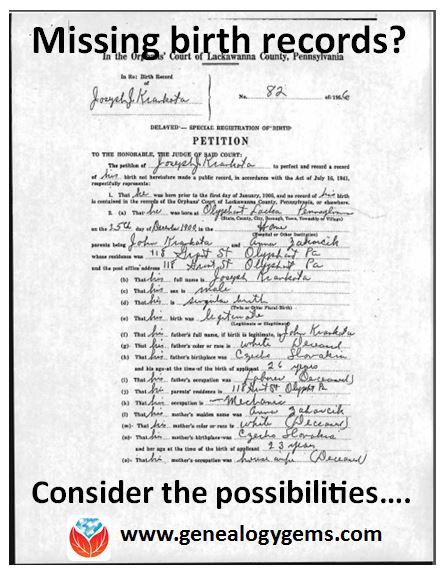
Thanks for sharing this list with anyone you know who wants to find their ancestors’ parents!
More Genealogy Gems on Finding Your Ancestors in Old Records
Missing Birth Record? Here’s What You Can Do to Track it Down
Try These 2 Powerful Tools for Finding Genealogy Records Online
Finding Ancestors in Courthouse Records: Research Tips
(Premium website membership required)
About the Author: Lisa Louise Cooke is the producer and host of the Genealogy Gems Podcast, an online genealogy audio show and app. She is the author of the books The Genealogist’s Google Toolbox, Mobile Genealogy, How to Find Your Family History in Newspapers, and the Google Earth for Genealogy video series, and an international keynote speaker.
This article was originally posted on November 3, 2015 and updated on April 19, 2019.
by Lacey Cooke | Dec 8, 2017 | 01 What's New, Ancestry, Canadian, German, Records & databases
Big records updates at the Genealogy Giant website Ancestry.com! Brand new collections of birth, marriage, death, and census records for Canada were added this week, along with a Remembrance Book for the 100th anniversary of the Halifax explosion. Additionally, new vital records are now available for Germany.
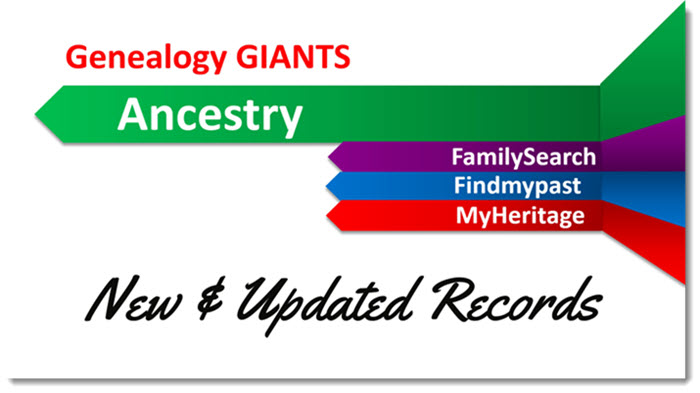
Canada – Birth, Marriage, Death, and Census Records
This year, December 6th marks the 100th anniversary of the Halifax explosion, which was a devastating maritime disaster in Nova Scotia, Canada. Ancestry has recently made available the ‘Halifax Explosion Remembrance Book,’ an online searchable database with detailed information for 1,946 casualties – more than 300 of whom are recently-confirmed and identified victims.
Ancestry also had a huge update of vital and census records this week for Canada:

AncestryDNA for Canada is on sale for just $99! Reg. $129 CAD. Sale ends 12/24/17. Excludes tax & shipping.
Alberta. Explore the new Births Index, 1870-1896, the Deaths Index, 1870-1966, and the Marriages Index, 1898-1942. Note that the marriage index is slightly irregular, in that each image only includes either the bride or the groom and their marriage year.
Newfoundland. Search baptisms and marriage records in the new collection of Church Records, 1793-1899. You’ll also find records from various churches in Newfoundland in the Births, Marriages, and Deaths, 1757-1901 collection, and the Births, Marriages, and Deaths, 1850-1949 collection. Also available are the 1921 Census, the 1935 Census, and the 1945 Census. Those databases originate from the Newfoundland Department of Tourism, Culture, and Recreation.
New Brunswick. New vital records collections start with Births and Late Registrations, 1810-1906. Then you’ll find Marriages, 1789-1950, which include registers, certificates, delayed registrations, and returns. And Deaths, 1888-1938 is also now online.
Prince Edward Island. Baptisms, Marriages, Burials, 1780-1983 is comprised of church records for Prince Edward Island. The Marriage Registers, 1832-1888 collection was created from newspapers, church records, and other sources that may or may not be provided. The Death Card Index, 1810-1913 contains pictures of the index cards from the Prince Edward Island Provincial Archives.
Nova Scotia. Lastly, Antigonish Catholic Baptisms, Marriages, and Burials, 1823-1905 are now available for Nova Scotia. The earlier registers are written in paragraph format, while later registers are typically pre-printed forms with information filled in by hand.
German Vital Records
Lots of new vital records collections for Germany recently became available, starting with Waldshut-Tiengen, Births, Marriages, and Deaths, 1870-1945. This collection of civil registers includes records from 9 additional communities which are today boroughs of Waldhut-Tiengen.
Next are Erfurt, Germany, Births, 1874-1901 and Marriages, 1874-1900. Additional events from the life of the child or the couple were sometimes recorded later on in the margins, but have not been indexed.
You’ll also find Zschopau, Germany, Births, 1876-1914, Marriages, 1876-1920, and Deaths, 1876-1958 now at Ancestry. It may be helpful to note that during the time period of these collections until 1918, Zschopau belonged to the Kingdom of Saxony.
Finally, Traunstein, Germany, Births, 1876-1905, Marriages, 1876-1934, and Deaths, 1876-1978 are also online, where you’ll find names, dates of birth, dates of deaths, witnesses, informants, parents, signatures, and other information.
Get the most out of Ancestry!
 Getting started on Ancestry.com can be a little daunting. As one of the world’s top genealogy websites, it’s packed with information about millions of people–perhaps including your ancestors. These step-by-step instructions will help you start building your family tree and learning more about your heritage. Click to read our recent article Getting Started on Ancestry.com.
Getting started on Ancestry.com can be a little daunting. As one of the world’s top genealogy websites, it’s packed with information about millions of people–perhaps including your ancestors. These step-by-step instructions will help you start building your family tree and learning more about your heritage. Click to read our recent article Getting Started on Ancestry.com.
Disclosure: This article contains affiliate links and Genealogy Gems will be compensated if you make a purchase after clicking on these links (at no additional cost to you). Thank you for supporting Genealogy Gems!
by Lisa Cooke | Sep 8, 2017 | 01 What's New, British, Canadian, Irish, Records & databases
Featured this week are new records for Canada, including the 1851 Canada Census, and BMD for Saskatchewan and Manitoba. Other records include new Irish collections, updated New Zealand birth, marriage, and death collections, new marriage record collections for England, and the launch of the New York State Death Index.
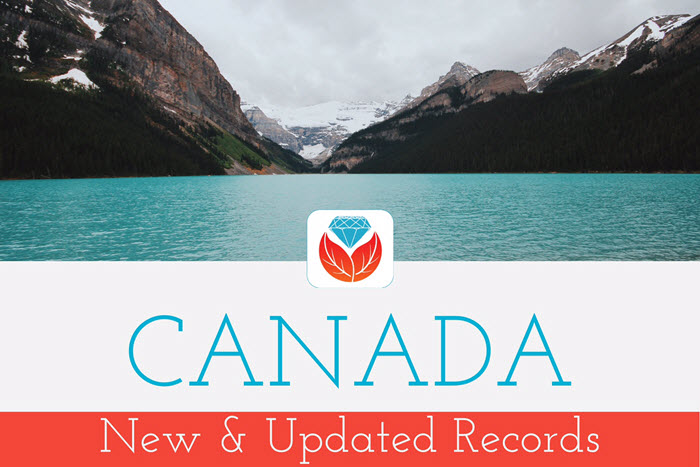
Canadian Genealogy: New Online
Ancestry.com has new collections for Saskatchewan, Canada available online now. These collections include Cemetery Transcripts (1850-1994) and Catholic Baptisms, Marriages, and Burials (1867-1932). These collections are both also available on MyHeritage.

Claire Banton, Library and Archives Canada (LAC)
Also at Ancestry this week are new records for Manitoba, Canada. You can search Baptisms, Marriages, and Burials (1834-1959), and keep in mind that some of the records in this collection pre-date Manitoba’s creation as a province, and, as a result, are from locations that do not exist in present-day Manitoba. Some records may also appear in French. You can also explore Manitoba Census Indexes (1832-1856 & 1870).
The 1851 Canada Census is available now at Findmypast. It contains over 1.3 million records and images for Canada West (Ontario) and Canada East (Quebec), New Brunswick, and Nova Scotia. This collection is also available at MyHeritage, as well as at the Library and Archives Canada (though their search tools may not be quite as robust).
For fabulous quick tips on Canadian research, take a listen to Lisa’s interview with Claire Banton of the Library and Archives Canada (LAC). Available free on the Genealogy Gems Podcast episode #199.
Irish Military & Bank Records
County Cork. A new database of Irish soldiers is now available online: Deserters, acts of heroism, and IRA murders unearthed. According to the site: “The details of some 2,187 people – soldiers and their families – recorded mainly in the registers of Ballincollig Garrison Chapel have been recovered using the registers of baptisms, marriages and burials between 1810 and 1922 now in the safe custody of the RCB Library, and further research using a variety of additional resources have further unlocked their hidden stories.”
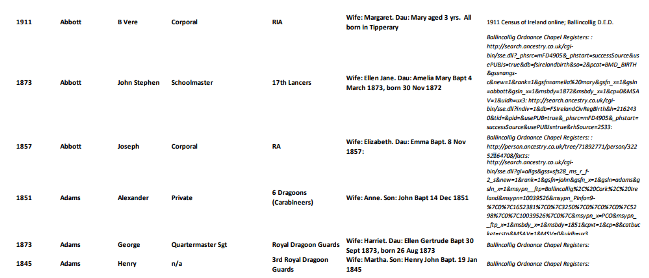
Snippet from a detailed spreadsheet containing information on the 2,187 soldiers and their families recorded in the registers of Ballincollig Garrison Chapel.
Newstalk. The Central Bank of Ireland opens its archives up to the public, including an online catalog. According to a recent article: “The bank says the archives can now be used for public research purposes for the first time. They include a range of materials created and acquired by the bank – such as objects, documents, and ledgers dating from 1786 to 1986.” All materials are open to the public in a dedicated research room, and an online catalog is available to determine what materials may be of interest.
Updated New Zealand Collections
Thousands of records have been added to Findmypast’s collection for New Zealand. Updates include 19,000 added to the Birth Index 1848 onward, 10,000 records added to the Marriage Index 1854 onward, and over 32,000 records added to the Death Index 1848 onward.
British Marriage Records: New Online
It’s wedding bells for Britain! Findmypast has a new collection of Oxfordshire Marriage Bonds 1634-1849 with over 46,000 records. You can also browse the new British Marriage Licenses 1446-1837 collection, where 15 English counties are represented including London, Lancashire, Suffolk, Exeter, Lincoln, Yorkshire, and more. Lastly, explore the thousands of Fleet marriages in Findmypast’s new collection of England Clandestine Marriages 1667-1754 of over 42,000 records.
United States: Newspapers & More
New York. Ancestry.com has just launched a collection of New York State death indexes 1880 to 1956. Ancestry says that “the collection includes more than 5 million names of people who died in New York State.” This death index is available online elsewhere for free, but Ancestry subscribers will appreciate the convenience of searching it on the site.
Colorado. Colorado Virtual Library: “The Colorado Historic Newspapers Collection recently added four new titles; the Brush Lariat (1884-1885), the Morgan County Republican (1912-1920), the Louisville Times (1942-2007), and the Whitehorn News (1897-1907). These four new titles, added by a longtime CHNC partner and two new partners, join 205 titles of historic Colorado newspapers.”
Florida. The Greater North Miami Historical Society had a collection of historical images. Its historical collection dates back to the 1930s and includes over 4,000 negatives, photographs, and other items. *Only a fraction of the material has been put online and the project continues.
Newspapers (Seattle, WA, Boston, MA, & Washington D.C.)
Accessible Archives has announced the completion of additional titles in its African American Newspapers and Women’s Suffrage collections. The five newspapers are now fully imaged and searchable. These tiles range from mid-19th century to early 20th century.
Disclosure: This post contains affiliate links and Genealogy Gems will be compensated if you make a purchase after clicking on these links (at no additional cost to you). Thank you for supporting Genealogy Gems!









 • Amish,
• Amish,








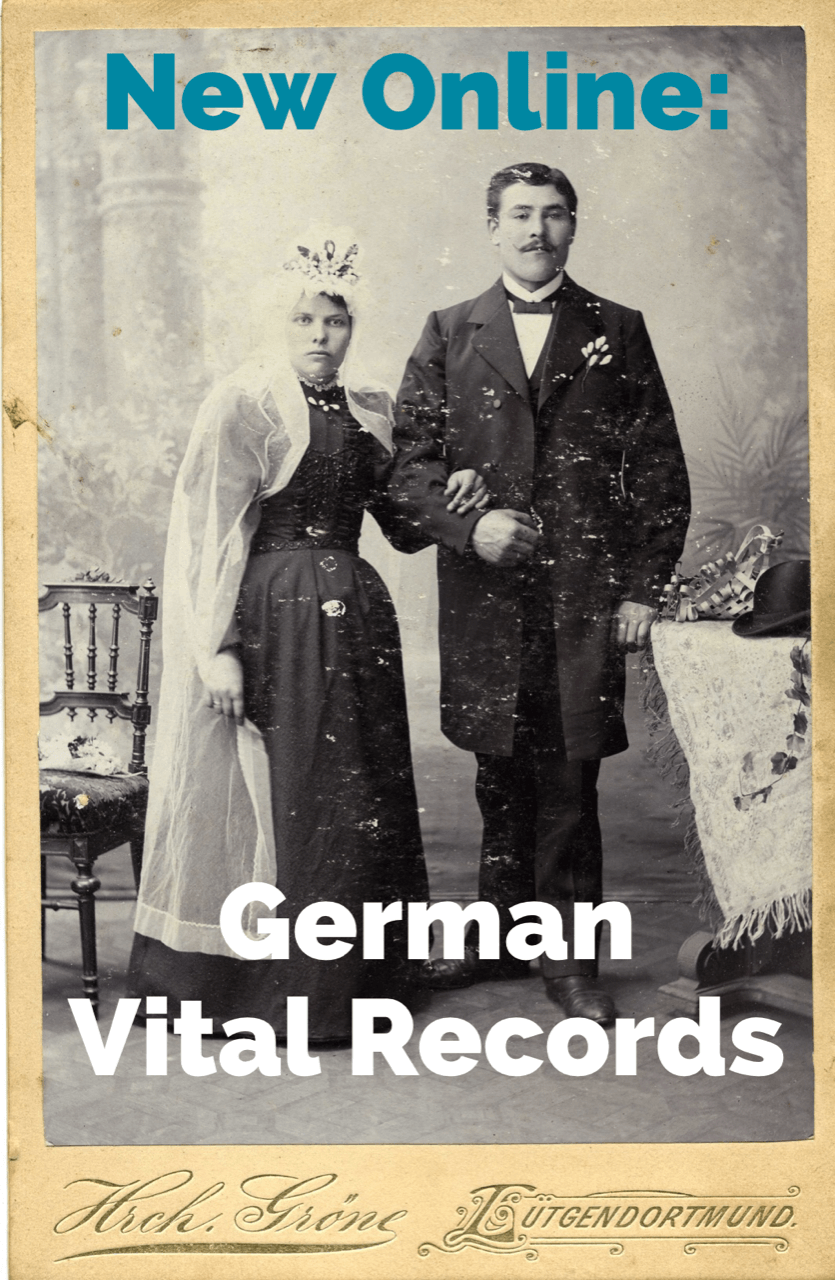
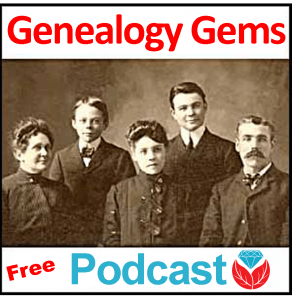



 Getting started on Ancestry.com can be a little daunting. As one of the world’s top genealogy websites, it’s packed with information about millions of people–perhaps including your ancestors. These step-by-step instructions will help you start building your family tree and learning more about your heritage. Click to read our recent article
Getting started on Ancestry.com can be a little daunting. As one of the world’s top genealogy websites, it’s packed with information about millions of people–perhaps including your ancestors. These step-by-step instructions will help you start building your family tree and learning more about your heritage. Click to read our recent article 





